| comments |
This page serves as an umbrella for any individuals of Eratoneura that have dark orange to red wing markings; these marks are thin and often times broken. In the eastern and central regions of North America, there are a number of Eratoneura species that have very similar wing patterns, so similar that it is unlikely a reliable identification can be made between these species without dissecting an individual and looking at genitalia. Below are some of the Eratoneura species that are encompassed by this page, with text taken from the 3I database illustrating the descriptions of color and pattern for each species. Links exist for the profile page of each species below.
E. maculata- Dorsum yellow or white. Color pattern red or orange. Vertex with orange parallel submedial lines (often with lateral branch). Vertex midline pale. Anteclypeus pale, concolorous with rest of face. Pronotum with Y- or V-shaped medial vitta. Mesonotum pale, with dark lateral triangles, apex dark, contrasting with adjacent pale areas. Thoracic venter entirely pale. Forewings with broken oblique vittae, without crossbands. Clavus with separate basal and distal vittae. Forewings with dark spot on costal margin. Forewing apical cell II without distal spot, inner apical cell with brown spot basally.
E. mira- Dorsum yellow or white. Color pattern red or orange. Vertex with orange parallel submedial lines (often with lateral branch). Vertex midline pale. Anteclypeus pale, concolorous with rest of face. Pronotum with Y- or V-shaped medial vitta. Mesonotum pale, with dark lateral triangles, apex dark, contrasting with adjacent pale areas. Thoracic venter entirely pale. Forewings with broken oblique vittae, without crossbands. Clavus with separate basal and distal vittae. Forewings with dark spot on costal margin. Forewing apical cell II without distal spot, inner apical cell with brown spot basally.
E. fergersoni- Dorsum yellow or white. Color pattern red or orange. Vertex with orange parallel submedial lines (often with lateral branch). Vertex midline pale. Anteclypeus pale, concolorous with rest of face. Pronotum with Y- or V-shaped medial vitta. Mesonotum pale, with dark lateral triangles, apex dark, contrasting with adjacent pale areas. Thoracic venter entirely pale. Forewings with broken oblique vittae, without crossbands. Clavus with separate basal and distal vittae. Forewings with dark spot on costal margin. Forewing apical cell II without distal spot, inner apical cell with brown spot basally.
E. igella- Dorsum yellow or white. Color pattern red or orange. Vertex with orange parallel submedial lines (often with lateral branch). Vertex midline pale. Anteclypeus pale, concolorous with rest of face. Pronotum with Y- or V-shaped medial vitta. Mesonotum pale, with dark lateral triangles, apex dark, contrasting with adjacent pale areas. Thoracic venter entirely pale. Forewings with broken oblique vittae, without crossbands. Clavus with separate basal and distal vittae. Forewings with dark spot on costal margin. Forewing apical cell II without distal spot, inner apical cell with brown spot basally.
E. prolixa- Dorsum yellow or white. Color pattern red or orange. Vertex with orange parallel submedial lines (often with lateral branch). Vertex midline pale. Anteclypeus pale, concolorous with rest of face. Pronotum with Y- or V-shaped medial vitta. Mesonotum pale, with dark lateral triangles, apex dark, contrasting with adjacent pale areas. Thoracic venter entirely pale. Forewings with broken oblique vittae, without crossbands. Clavus with separate basal and distal vittae. Forewings with dark spot on costal margin. Forewing apical cell II without distal spot, inner apical cell with brown spot basally.
E. haysensis- Dorsum yellow or white. Color pattern red or orange. Vertex with orange parallel submedial lines (often with lateral branch). Vertex midline pale. Anteclypeus pale, concolorous with rest of face. Pronotum with Y- or V-shaped medial vitta. Mesonotum pale, with dark lateral triangles, apex dark, contrasting with adjacent pale areas. Thoracic venter entirely pale. Forewings with broken oblique vittae, without crossbands. Clavus with separate basal and distal vittae. Forewings with dark spot on costal margin. Forewing apical cell II without distal spot, inner apical cell with brown spot basally.
E. abjecta- Dorsum yellow or white. Color pattern red or orange. Vertex with orange parallel submedial lines (often with lateral branch). Vertex midline pale. Anteclypeus pale, concolorous with rest of face. Pronotum with Y- or V-shaped medial vitta. Mesonotum pale, with dark lateral triangles, apex dark, contrasting with adjacent pale areas. Thoracic venter entirely pale. Forewings with broken oblique vittae, without crossbands. Clavus with separate basal and distal vittae. Forewings with dark spot on costal margin. Forewing apical cell II without distal spot, inner apical cell with brown spot basally.
E. solita- Dorsum yellow or white. Color pattern red or orange. Vertex with orange parallel submedial lines (often with lateral branch). Vertex midline pale. Anteclypeus pale, concolorous with rest of face. Pronotum with Y- or V-shaped medial vitta. Mesonotum pale, with dark lateral triangles, apex dark, contrasting with adjacent pale areas. Thoracic venter entirely pale. Forewings with broken oblique vittae, without crossbands. Clavus with separate basal and distal vittae. Forewings with dark spot on costal margin. Forewing apical cell II without distal spot, inner apical cell with brown spot basally. |
Species Photo Gallery for Eratoneura complex 2 'Broken-lined' Eratoneura |
 | Photo by: Kyle Kittelberger
Wake Co.
Comment: mixed hardwood forest habitat; this hopper has a distinctive pattern on its face (note the thin line at the top of the head) | 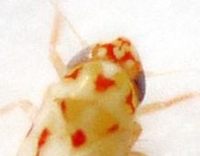 | Photo by: Kyle Kittelberger
Wake Co.
Comment: mixed hardwood forest habitat; this hopper has a distinctive pattern on its face (note the thin line at the top of the head) |
 | Photo by: Kyle Kittelberger
Wake Co.
Comment: mixed hardwood forest habitat; this hopper has a distinctive pattern on its face (note the thin line at the top of the head) | 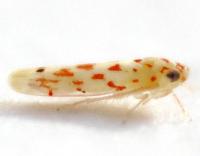 | Photo by: Kyle Kittelberger
Wake Co.
Comment: mixed hardwood forest habitat; this hopper has a distinctive pattern on its face (note the thin line at the top of the head) |
 | Photo by: Paul Scharf
Warren Co.
Comment: Attracted to Light |  | Photo by: Paul Scharf
Warren Co.
Comment: Attracted to Light |
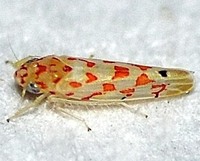 | Photo by: Paul Scharf
Warren Co.
Comment: Attracted to Light | 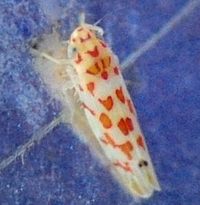 | Photo by: Kyle Kittelberger
Wake Co.
Comment: mixed hardwood forest habitat |
 | Photo by: Vin Stanton
Buncombe Co.
Comment: | 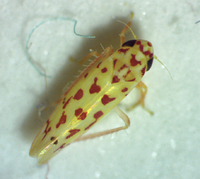 | Photo by: Ken Kneidel
Mecklenburg Co.
Comment: 2.9 mm, alive, stuck in a tree band on oak |
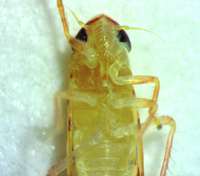 | Photo by: Ken Kneidel
Mecklenburg Co.
Comment: 2.9 mm, alive, stuck in a tree band on oak | 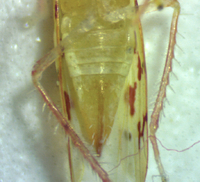 | Photo by: Ken Kneidel
Mecklenburg Co.
Comment: 2.9 mm, alive, stuck in a tree band on oak |
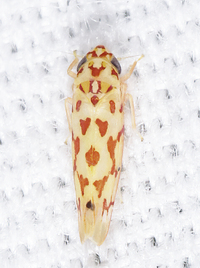 | Photo by: John Petranka
Orange Co.
Comment: | 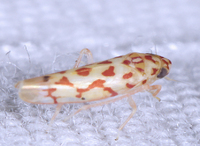 | Photo by: John Petranka
Orange Co.
Comment: |
|

 »
»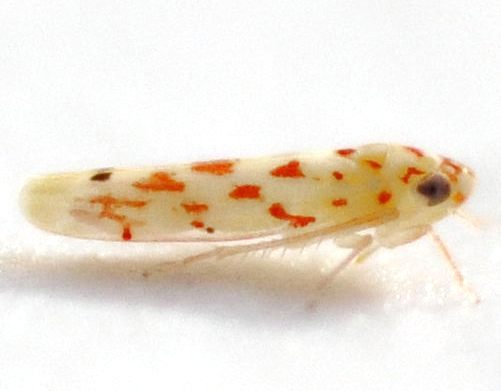
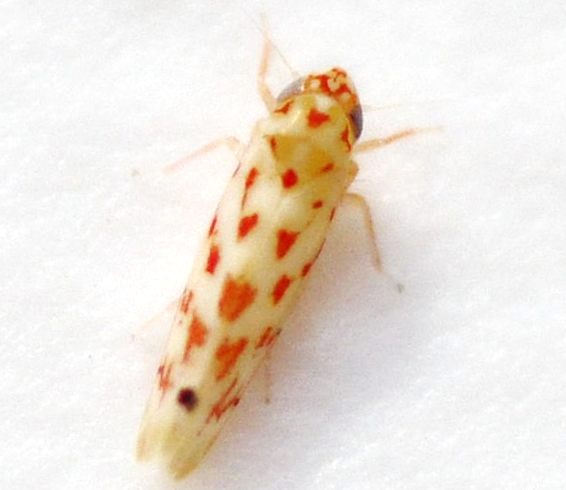

 »
»
